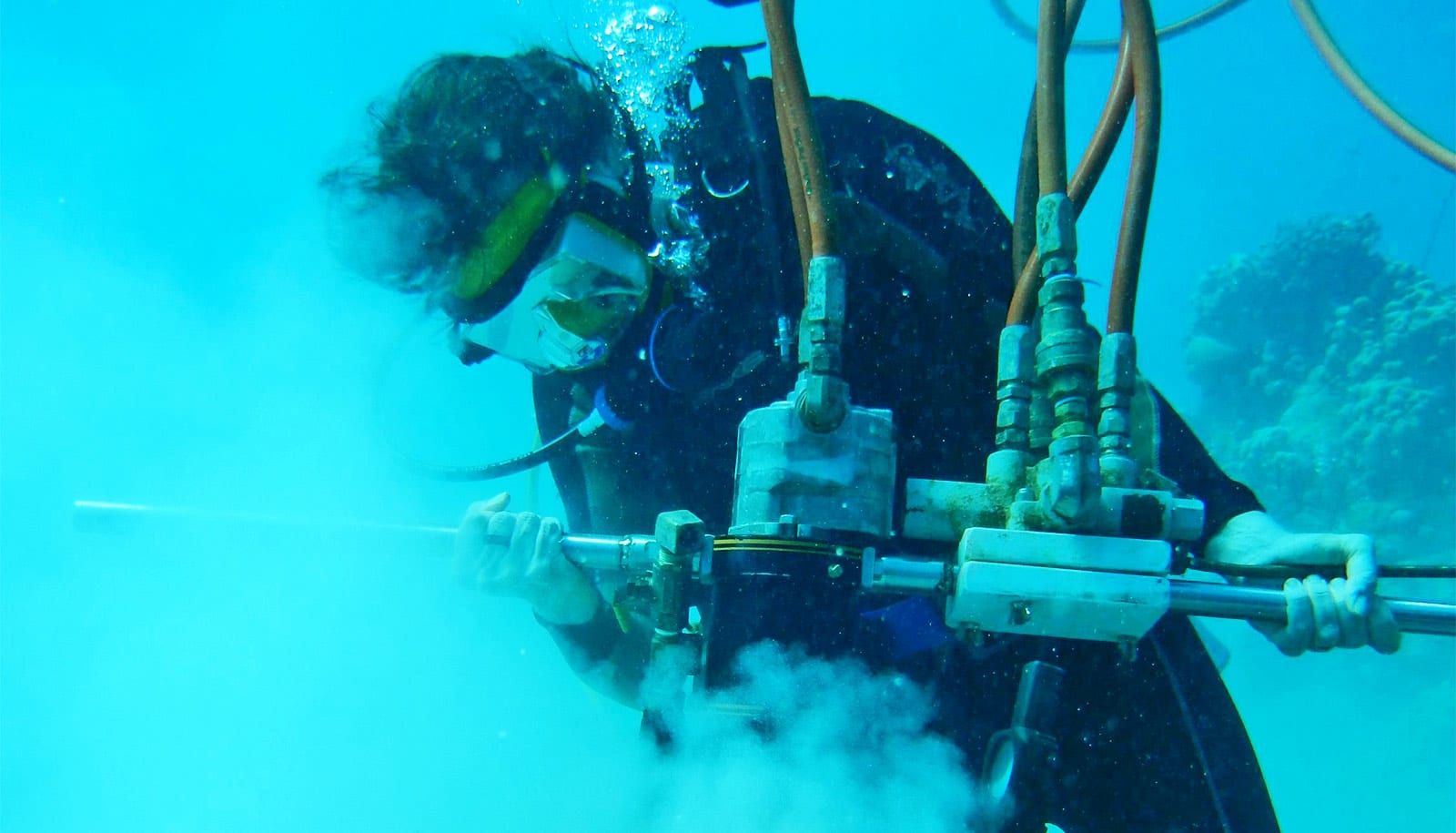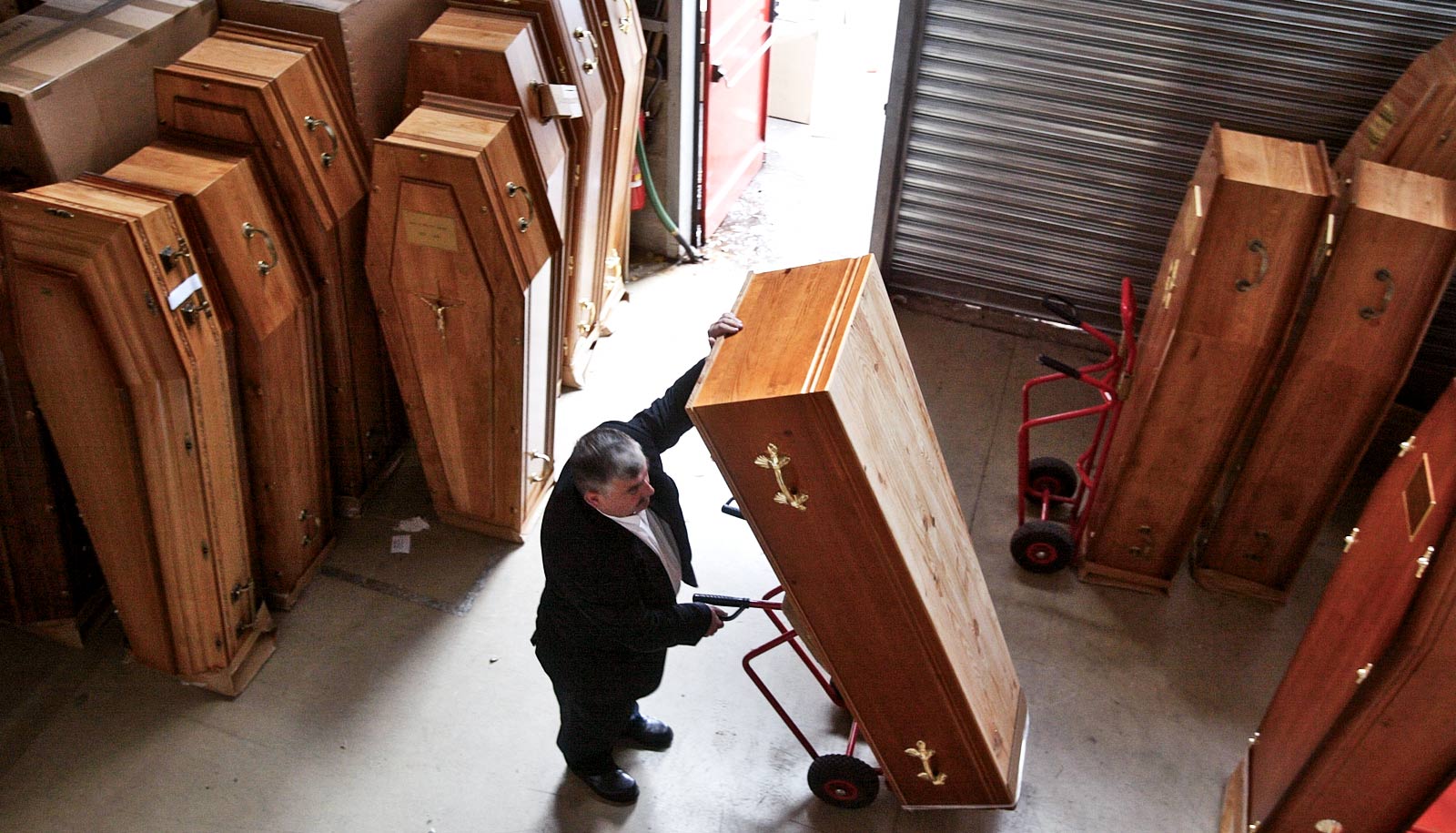Stronger El Niños are part of a new, strange climate pattern that appears unique to the Industrial Age, according to compelling evidence in the Pacific Ocean.
This is the first time that enough physical evidence spanning millennia has come together to allow researchers to say that definitively, according to a new study, published in Geophysical Review Letters.
El Ninos have been very intense in our times, which stands to worsen storms, drought, and coral bleaching in El Nino years. The new data show demonstrably that El Niños, La Niñas, and the climate phenomenon that drives them have been swinging more broadly in the era of human-induced climate change.
“What we’re seeing in the last 50 years is outside any natural variability. It leaps off the baseline. Actually, we even see this for the entire period of the Industrial Age,” says Kim Cobb, professor in Georgia Institute of Technology’s School of Earth and Atmospheric Sciences.

“There were three extremely strong El Niño-La Niña events in the 50-year period, but it wasn’t just these events. The entire pattern stuck out.”
First author Pam Grothe compared temperature-dependent chemical deposits from present-day corals with those of older coral records representing relevant sea surface temperatures from the past 7,000 years.
Grothe and collaborators identified patterns of in the El Niño Southern Oscillation (ENSO), swings of heating and cooling of equatorial Pacific waters that, every few years, spur El Niños and La Niñas respectively.
The team found the Industrial Age ENSO swings were 25% stronger than in the pre-industrial records.
Perfect match
The evidence had slumbered in and around shallow Pacific waters, where ENSO and El Niños originate, until Cobb and her students plunged hollow drill bits into living coral colonies and fossil coral deposits to extract it. In more than 20 years of field expeditions, they collected cores that contained hundreds of records.
The corals’ recordings of sea surface temperatures proved astonishingly accurate when benchmarked. Coral records from 1981 to 2015 matched sea surface temperatures measured via satellite in the same period so exactly that, on a graph, the jagged lines of the coral record covered those of the satellite measurements, obscuring them from view.
“When I present it to people, I always get asked, ‘Where’s the temperature measurement?’ I tell them it’s there, but you can’t see it because the corals’ records of sea surface temperatures are that good,” says Grothe, a former graduate research assistant in Cobb’s lab and now an associate professor at the University of Mary Washington.
Industrial Age red flag
In 2018, enough coral data had amassed to distinguish ENSO’s recent activity from its natural preindustrial patterns.
To stress-test the data, Grothe left out chunks to see if the industrial Age ENSO signal still stuck out. She removed the record-setting 1997/1998 El Niño-La Niña and examined Industrial Age windows of time between 30 and 100 years long.
The signal held in all windows, but the data needed the 97/98 event to be statistically significant. This could mean that changes in the ENSO activities have just now reached a threshold that makes them detectable.
Every two to seven years, an El Niño is born in the spring when the warm phase of the ENSO swells into a long heat blob in the tropical Pacific, typically peaking in early winter. It blows through oceans and air around the world, ginning up deluges, winds, heat, or cold in unusual places.
Once El Niño passes, the cycle reverses into La Niña by the following fall, when airstreams push hot water westward and dredge up frigid water in the equatorial Pacific. This triggers a different set of global weather extremes.
Tropical Pacific corals record the hot-cold oscillations by absorbing less of an oxygen isotope (O18) during ENSO’s hot phases, and progressively more of it during ENSO’s cool phases. As corals grow, they create layers of oxygen isotope records, chronicles of temperature history.
Ancient El Niño-La Niña events were mild
Extracting them is adventurous: A research diver guides a chest-high pneumatic drill under the ocean. Its pressure hose connects to a motor on the boat that powers the drill after the diver has taken off her fins and weighed herself down on the reef.
The diver then carefully angles the bit down the axis of coral growth to get a core with layers that can be accurately counted back in time. On occasion, waves put her and her safety diver through washing machine cycles.
“Doing this all underwater adds an extra level of difficulty, even from the simplest tasks like working with wrenches,” Grothe says. “But the drill slices through underwater corals like butter. Fossil corals are drilled on land, and the drill constantly seizes up and overheats.”
The physical proof taken from three islands that dot the heart of the ENSO zone has also thrown down scientific gauntlets, starkly challenging computer models of ENSO patterns and causes. A prime example: Previously unknown to science, the study shows that in a period from 3,000 to 5,000 years ago, the El Niño-La Niña oscillations were extremely mild.
“Maybe there’s no good explanation for a cause. Maybe it just happened,” Cobb says. “Maybe El Niño can just enter a mode and get stuck in it for a millennium.”
The National Science Foundation funded the work.
Source: Georgia Tech


